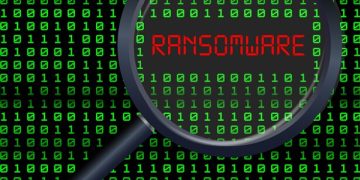Cybersecurity Audits: A Comprehensive Guide to Preparation & Success

Cybersecurity audits are systematic evaluations of an organization’s security posture, assessing its ability to protect sensitive data and IT infrastructure against threats. Preparing involves understanding audit scope, gathering documentation, and remediating vulnerabilities, ensuring a successful assessment and improved security.
Navigating the world of cybersecurity can be daunting, especially when it comes to audits. Understanding what’s involved and how to prepare can significantly impact your organization’s security posture. This article will guide you through everything you need to know about cybersecurity audits, including how to prepare for and successfully pass a security assessment.
Understanding Cybersecurity Audits
Cybersecurity audits are more than just a formality; they’re a crucial tool for ensuring the safety and integrity of your digital assets. These audits help organizations identify vulnerabilities, assess risks, and implement effective security measures.
But what exactly is a cybersecurity audit, and why is it important? Essentially, it’s a systematic process of evaluating an organization’s security controls and practices. This evaluation can reveal weaknesses that could be exploited by attackers, allowing you to strengthen your defenses proactively.
Types of Cybersecurity Audits
There are several types of cybersecurity audits, each with a specific focus. Understanding these types can help you choose the right audit for your organization’s needs.
- Internal Audits: Conducted by internal teams to assess compliance with company policies and procedures.
- External Audits: Performed by independent third-party firms to provide an unbiased assessment of your security posture.
- Compliance Audits: Focused on ensuring adherence to regulatory requirements such as HIPAA, PCI DSS, or GDPR.
Why are Cybersecurity Audits Important?
Cybersecurity audits provide numerous benefits, making them an essential part of any comprehensive security strategy.
- Identify Vulnerabilities: Uncover weaknesses in your systems and processes before they can be exploited.
- Ensure Compliance: Verify adherence to industry regulations and standards.
- Improve Security Posture: Strengthen your overall security defenses and reduce the risk of cyberattacks.
Cybersecurity audits are essential in today’s digital landscape. They enable you to be proactive in reinforcing the confidentiality, integrity, and availability of your company’s critical assets.

Preparing for a Cybersecurity Audit
Preparation is key to a successful cybersecurity audit. A well-planned approach can streamline the audit process and demonstrate your commitment to security.
Before the audit begins, take the time to gather the necessary documentation, assess your security controls, and address any identified vulnerabilities. This proactive approach can significantly improve your chances of passing the audit with flying colors.
Gathering Documentation
One of the first steps in preparing for an audit is to gather all relevant documentation. This includes policies, procedures, and records that demonstrate your security practices.
- Security Policies: Document outlining your organization’s approach to security.
- Incident Response Plan: Plan for how to handle security incidents and breaches.
- Risk Assessment Reports: Reports detailing identified risks and mitigation strategies.
Assessing Security Controls
Next, assess your existing security controls to identify any gaps or weaknesses.
This assessment should cover all aspects of your security infrastructure, from network security to data protection and user access controls. Use the results of the review to target areas for improvement.
Addressing Vulnerabilities
Based on your security assessment, take steps to address any identified vulnerabilities. This may involve patching systems, updating software, or implementing new security controls.
Prioritize vulnerabilities based on their severity and potential impact. Keep a log of the actions you take to remediate vulnerabilities. This is invaluable for demonstrating your diligence.
With meticulous preparation, you’ll be well equipped to showcase the cybersecurity standards of the organization.
Key Areas Covered in a Security Assessment
A security assessment covers a wide range of areas, from network infrastructure to data protection practices. Understanding these key areas can help you focus your preparation efforts.
By understanding what to expect, you can ensure that your organization is well-prepared to demonstrate its security posture. Let’s delve deeper into these critical security components.
Network Security
Network security is a crucial area of assessment, focusing on the protection of your network infrastructure from unauthorized access and cyber threats.
This includes evaluating firewalls, intrusion detection systems, and network segmentation to ensure they are effectively safeguarding your network.
Data Protection
Another critical area is data protection, which involves assessing how you protect sensitive data from unauthorized access, use, or disclosure.
- Encryption: Ensuring data is encrypted both in transit and at rest.
- Access Controls: Implementing strict access controls to limit who can access sensitive data.
- Data Loss Prevention (DLP): Using DLP tools to prevent sensitive data from leaving the organization.
Incident Response
Incident response is the process of detecting, analyzing, and responding to security incidents. Assessors will review your incident response plan and procedures to ensure they are effective.
An effective incident response plan can minimize damage and downtime in the event of a security breach. Being well prepared can save money and headaches.
Your understanding of the broad areas that will be reviewed during the audit will ensure success.

Navigating the Audit Process
The audit process can seem daunting, but understanding the steps involved can help you navigate it with confidence.
From the initial meeting to the final report, knowing what to expect can reduce stress and ensure a smooth audit experience. Let’s explore how to manage each phase effectively.
Initial Meeting
The first step in the audit process is the initial meeting, where the auditors meet with your team to discuss the scope, objectives, and timeline of the audit.
This meeting is an opportunity to ask questions, clarify expectations, and establish a good working relationship with the auditors.
Data Collection and Analysis
Next, the auditors will collect and analyze data to assess your security controls. This may involve reviewing documentation, conducting interviews, and performing technical tests.
Be prepared to provide auditors with access to systems and data, and answer their questions accurately and thoroughly.
Reporting and Remediation
Finally, the auditors will issue a report outlining their findings and recommendations. This report will highlight any vulnerabilities or compliance gaps that need to be addressed.
- Prioritize Remediation: Focus on addressing the most critical vulnerabilities first.
- Track Progress: Monitor your progress in implementing the recommendations.
- Communicate Updates: Keep the auditors informed of your remediation efforts.
With the right approach and preparation, you can effectively navigate the audit process and improve your security posture.
Common Challenges and How to Overcome Them
Even with thorough preparation, cybersecurity audits can present challenges. Understanding these common pitfalls and how to address them can help you avoid setbacks.
From resource constraints to complex regulations, many roadblocks can impede a smooth audit process. But, with the correct strategy you can overcome these challenges.
Resource Constraints
One of the most common challenges is resource constraints, particularly for small and medium-sized businesses (SMBs). Limited budgets and staff can make it difficult to prepare for and undergo an audit.
Address this challenge by prioritizing tasks, outsourcing certain activities, and leveraging free resources and tools.
Keeping Up with Regulations
Another challenge is keeping up with constantly evolving regulations and standards. Failure to comply with these requirements can result in penalties and reputational damage.
- Stay Informed: Regularly monitor updates to relevant regulations and standards.
- Seek Expert Advice: Consult with cybersecurity professionals to ensure compliance.
- Implement a Compliance Framework: Adopt a structured approach to compliance management.
Technical Complexity
The increasing complexity of IT systems and networks can also pose a challenge. Understanding and securing these complex environments requires specialized expertise.
Overcoming this challenge requires on building partnerships with providers of cybersecurity to assure adequate support in understanding the latest strategies and security measures available.
Cybersecurity challenges come with new compliance frameworks, but it doesn’t have to be a daunting task.
Best Practices for a Successful Audit
To ensure a successful cybersecurity audit, follow these best practices:
These tips can ensure that you’re not just meeting the minimum requirements, but exceeding expectations and building a culture of security within your organization.
Start Early
Begin preparing for the audit well in advance. This gives you time to gather documentation, assess controls, and address vulnerabilities.
Procrastination can lead to rushed preparations and missed opportunities for improvement.
Engage Stakeholders
Involve key stakeholders from across the organization in the audit preparation process.
- Executive Support: Gain buy-in from senior management to ensure adequate resources and support.
- Cross-Functional Collaboration: Foster collaboration between IT, security, and business units.
- Employee Awareness: Educate employees about the importance of security and their role in maintaining it.
Continuous Improvement
Treat the audit as an opportunity for continuous improvement. Use the findings and recommendations to strengthen your security posture over time.
Regularly review and update your security policies, procedures, and controls to stay ahead of evolving threats and regulations.
Adhering to these best practices doesn’t just satisfy requirements, but establishes a culture that safeguards the organization.
| Key Aspect | Brief Description |
|---|---|
| 🛡️ Audit Preparation | Gather documentation, assess controls, and fix vulnerabilities. |
| 🚨 Incident Response | Have a plan for detecting and responding to security incidents. |
| 🔒 Data Protection | Encrypt data, manage access, and prevent data loss. |
| 🤝 Stakeholder Engagement | Involve executive and team members to support in the audit. |
Frequently Asked Questions (FAQs)
▼
The main goal is to evaluate security controls and practices. The audit seeks to identify vulnerabilities within an organization’s security posture. This minimizes the potential for cyberattacks by addressing flaws early.
▼
Involving stakeholders ensures that diverse perspectives are considered and that everyone understands their role in maintaining security. This promotes collaboration and support for implementing necessary changes.
▼
The frequency depends on the organization’s risk profile and regulatory requirements. Many organizations conduct audits annually or bi-annually. Organizations should also consider event-driven audits to address particular security events.
▼
An efficient ir plan needs detailed steps for detection, analysis, containment, eradication, and recovery. Communication protocols, roles, responsibilities, and contact information should be included.
▼
SMBs should prioritize tasks, outsource certain activities, and use free resources. Focus on the most critical vulnerabilities and engage with cybersecurity professionals to get affordable support.
Conclusion
By understanding the importance of cybersecurity audits, preparing thoroughly, and following best practices, organizations can improve their security posture and reduce the risk of cyberattacks. Embrace audits as an opportunity for continuous improvement, and create a culture of security that protects your valuable assets.





